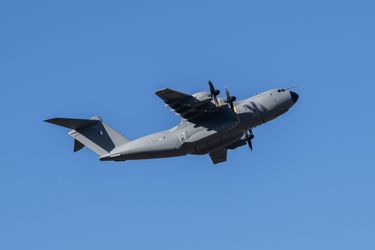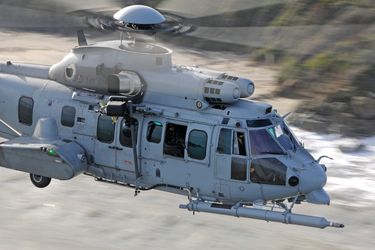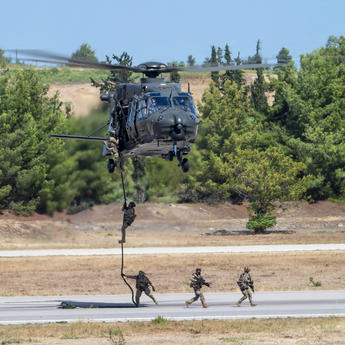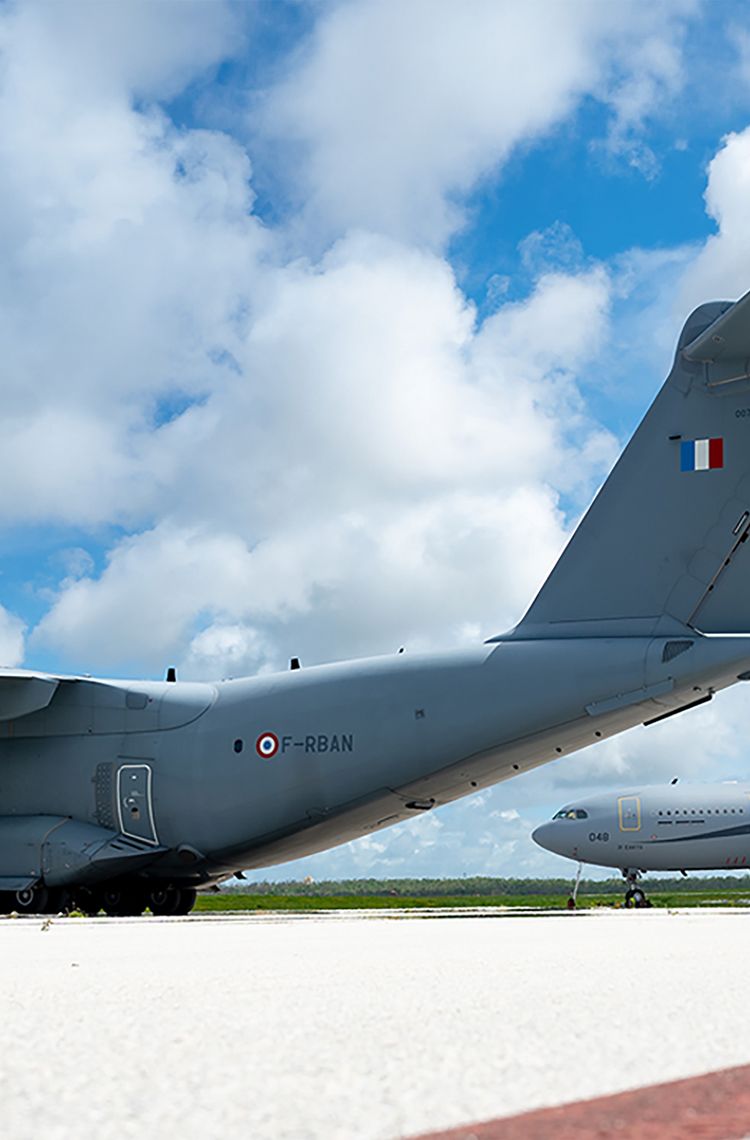The French aeronautics industry has accompanied the French Air Force since its creation on July 2, 1934, today known as the Armée de l'Air et de l'Espace (AAE) after encompassing space in 2020. From the first aircraft built by Potez or Nieuport, to the creation of the Noratlas after the Second World War, then the Transall - which marked the beginning of cooperation between France and Germany - the French air fleet has continuously evolved. Airbus is one of the key manufacturers supporting the French Armed Forces as their needs evolve, to ensure the success of current and future missions.
As General Guy Girier, Defence Advisor at Airbus Defence and Space, explains, "Airbus has inherited the industrial tradition of the French Air and Space Force, and has succeeded in keeping pace with tactical and strategic transport, thanks to a range of products that enable it to get as close to the ground as possible and rapidly transport troops and equipment." Airbus is present with the AAE in four main areas of activity: military air transport, transport and combat helicopters, satellites and intelligence.
Airbus dual role as a civilian and military products company has enabled us to respond to the specific needs of armed forces, and the air force in particular.
For example, to renew its government transport fleet, the army successively acquired A319s, then an A330, which was transformed into a French-style "Air Force One" to transport the French President, and put into service in 2010. Other solutions, such as the A330 MRTT (Multi Role Tanker Transport), have replaced the C135s acquired by General de Gaulle in 1957.
The A330 MRTT, a strategic aircraft
"The A330 MRTT, based on the A330-200 airliner and manufactured on the Toulouse assembly lines, delivers an incredible level of performance and gives the French Air Force unrivalled strategic depth," explains General Girier.
This multi-role air-to-air refuelling aircraft requires no additional fuel tanks, so the main cabin and lower-deck cargo areas are always available to meet transport requirements - troops and equipment - and provide in-flight refuelling in a single mission. It can also be configured to carry out medical evacuations (Medevac), as was the case for the transfer of patients from COVID-19.

The A330 MRTT Phénix is also a deterrent, with superior capabilities, particularly in terms of range. It has changed the strategic range of very long-range projection of airborne deterrent weapons. This is illustrated by the Pégase mission, which demonstrates the ability of the French armed forces to bring significant military resources to the Indo-Pacific area and defend these territories and French interests worldwide in less than 72 hours. "This demonstration has a strong political impact, supporting the strategy and the piloted deterrent component".

The A400M, a strategic security tool
The A400M has benefited from the experience of the Transall with its major tactical characteristics - short take-offs and landings from rough terrain - while multiplying its transport capabilities including heavy and outsized loads and improving its payload and range. The A400M is transforming the way in which tactical transport is used," explains General Girier. The A400M Atlas makes it possible to project airborne forces or airdrop operations from France and return to France fairly quickly, which changes the tempo at which these forces are used." In March 2020, the A400M delivered several tonnes of equipment by air directly to the theatre of Operation Barkhane in Mali for the first time, just five hours after taking off from France. This capability enables ground troops engaged in high-intensity combat to react quickly.
Helicopters: essential versatility
Airbus also supports the French Air Force with its transport and combat helicopters. Brought into service in 2006, the H225M Caracal is a real asset in combat search and rescue. It also supports ground forces and carries out rescue and tactical transport missions. Its ability to be refuelled in flight gives the Caracal an additional and unique asset in the French and European armies. It benefits from an increased range, and can carry out missions for the Special Operations Command in France and in theatres of operation, day and night.
The H125M Fennec is used for light transport missions, medical evacuations (MEDEVAC), search and rescue (SAR), base protection, active air safety measures (MASA) missions to monitor and protect sensitive sites from the air threats posed by slow, light or ultra-light aircraft flying at low altitude, and helicopter pilot training.
Puma helicopters take part in medical evacuations (MEDEVAC), first aid missions, troop transport and external operations (OPEX).

The HIL (Hélicoptère Interarmées Léger) programme aims to equip the three French armed forces with a single fleet of H160M helicopters, starting in 2026, to replace five models currently in service. By standardising the fleet with a common platform, this programme will enable the French armed forces to benefit from reduced operating costs and an optimised logistical footprint, while increasing operational availability. The AAE will use the H160M, named Guépard, to carry out surveillance and defence missions in French airspace. It will be responsible for supporting search and rescue operations, and is also capable of providing fire support or carrying out intelligence missions.
The arrival of space technology has changed the face of aerial and surveillance operations
The space industry came into its own in the 1970s with satellite imagery. It is essential to military intelligence. The information obtained from space has also made it possible to produce precise cartography and digital terrain models, making it possible to master altimetry for shooting or low-altitude navigation. Airbus has supplied several optical earth observation satellites, HELIOS (1995) and CSO (2018), as well as images acquired by the SPOT satellites (since 1986), Pléiades (since 2011) and finally Pléiades Neo (since 2021).
Secondly, navigation satellites such as Galileo, the latest generation of which is currently being produced at the Airbus site in Friedrichshafen, Germany, have enabled airborne vehicles of all kinds to accurately determine their position in the absence of any ground infrastructure.
The CERES electromagnetic listening constellation launched in 2021 is a unique technology. These satellites are capable of detecting electromagnetic 'signatures' (radars, air defences), identifying and mapping them, with no coverage limits.

Space observation and intelligence capabilities are also complemented by military telecommunications satellites, such as Syracuse 4B. This system enables the armed forces to communicate over very long distances with a high data rate and in complete security. "This family of satellites was initially used to transmit voice, then image and now data, the transmission and protection of which have become essential", explains General Girier.
A break with modern drone operations
Drones are making their appearance in most conflict zones. The French Air Force took an early interest in the Hunter drone programme, followed by the Harfang launched by Airbus in 1999, which completes the range of intelligence gathering systems. It can capture video images up to 1,000 kilometres from the ground station from which it is controlled, and transmit information in real time. It has been used in operations in Afghanistan.

The French Air Force is also positioning itself for the future of MALE (Medium Altitude Long Endurance) drone systems with the Eurodrone, which is capable of flying above 20,000 feet for up to 40 hours. "The MALE is a versatile multi-mission capability for the Air Force because it is able to observe and detect more elusive threats and engage them over high-risk areas". Eurodrone will play a key role in the future FCAS (Future Combat Air System) system of systems, thanks to its scalable configuration combining a high payload capacity and the electrical reserve provided by its two engines.
The FCAS is a European project, involving France, Germany and Spain. Belgium has just joined the programme as an observer member. A new-generation multi-role combat aircraft is surrounded by weapons systems and UAVs, all interconnected within a combat cloud with the ambition of providing the best tactical situation in real time, collaborative working of airborne resources, dynamic delegation of commitments and shortening of command and control decision-making loops.
"This specific positioning of Airbus, born of an industrial synthesis and its links with the army, places Airbus in a unique situation. Its cross-disciplinary skills in secure communications, cybersecurity and artificial intelligence provide solutions for building the systems of systems that the armed forces need for the future. Every element of an airborne system will be a brick that communicates with the others to consolidate tactical situational awareness and speed up the dissemination of information and orders from the chain of command," concludes General Guy Girier.
Discover more news
Continue Reading

German Navy takes over first NH90 Sea Tiger
Press Release
Helicopters
Airbus Helicopters, through the joint venture NHIndustries, has handed over the first NH90 Sea Tiger to the German Navy.
Germany orders 20 additional Airbus H145M helicopters
Press Release
Helicopters

Greece signs NH90 follow on support contract
Press Release
Helicopters

Airbus to onboard Artificial Intelligence in French armed forces' information systems
Press Release
Defence

International Training Centre: 15 years training the world's best military crews
Web Story
Defence
